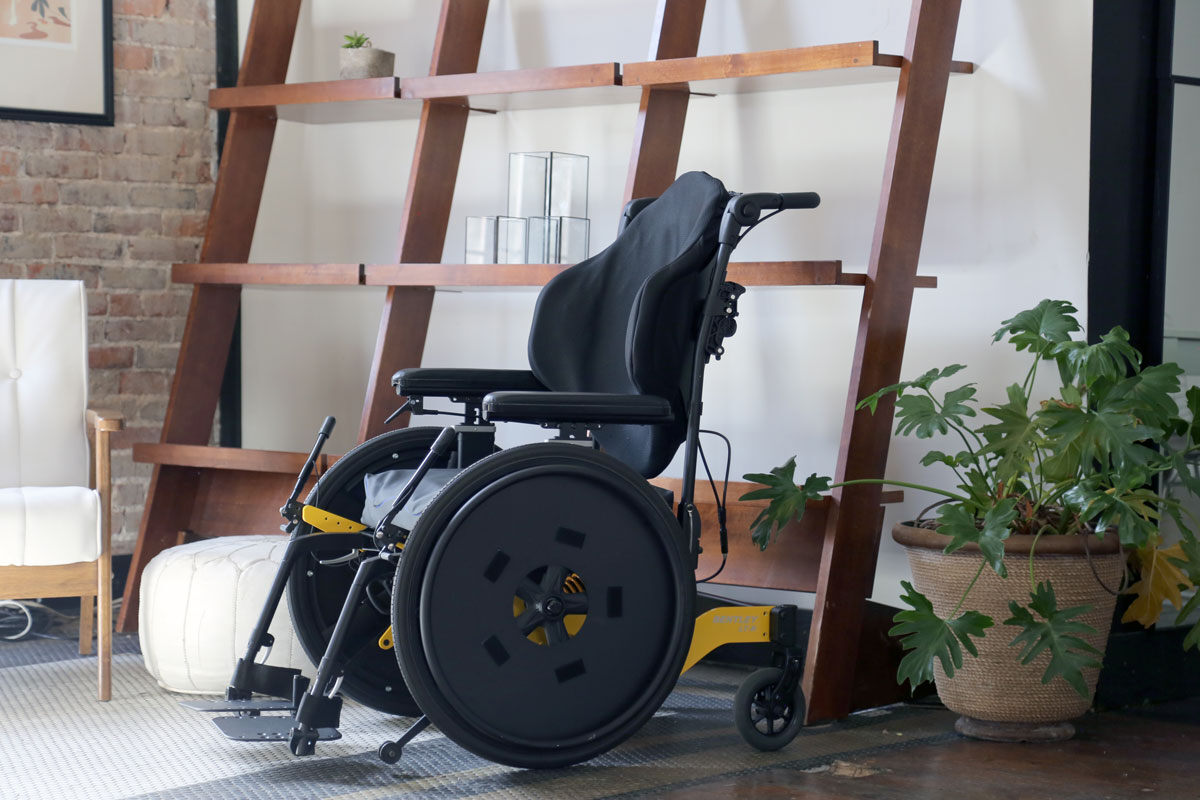Manual tilt-in-space wheelchairs are often misunderstood as mobility aids solely for dependent users who require assistance with positioning. However, this misconception overlooks the numerous benefits and functionalities these wheelchairs offer to a wide range of users. In this blog, we will debunk the myths that manual tilt-in-space wheelchairs are exclusively for dependent individuals and explore their versatility in enhancing independence. These wheelchairs are not only suitable for dependent users but also empower self-propulsion and repositioning.
Myth #1: Tilt-in-Space Wheelchairs Are Only for Severely Compromised Individuals
Tilt-in-space wheelchairs are versatile and can benefit a wide range of users. Frame customization and adaptability provide an individualized fit benefiting comfort, stability, pressure management as well as positioning for function. From adjustable seat angles and rear center of gravity adjustments to customizable backrests and leg rests, manual tilt-in-space wheelchairs can be tailored to provide functionality for users with varying levels of mobility. The PDG Bentley and Stellar tilt-in-space wheelchair models provide a zero or low knee rise by engineering a tilt pivot from the front of the wheelchair with a gas strut assist. This front seat pivot position allows the user to keep their feet on the ground while the chair is fully tilted posteriorly.
The PDG Bentley line offers up to 20 degrees of posterior tilt (which can be initiated by the user) from the front of the seat with zero knee rise. The PDG Bentley LT rigid lightweight aluminum frame provides superior stability and maneuverability which is ideal for foot and/or hand prolusion in combination with a seat to floor height as low at 13 inches.
The new Bentley LT-R features a lightweight aluminum frame and reverses the wheel configuration, promoting user independence through intuitive front wheel access for self-propulsion and maneuverability. The Bentley LT-R provides a seat to floor height as low as 12 inches increases success for a full heel strike and hand placement for propulsion.

The Stellar GLT provides an increased posterior tilt of 45 degrees with a low knee rise. This lighter weight aluminum frame increases the posterior tilting properties while still promoting self-propulsion, table access and participation in MRADLs.
Myth #2: Tilt-in-Space Wheelchairs Are Too Heavy and Bulky to Propel
Newer frame materials and frame configuration have allowed tilting manual wheelchairs to dispel the myth that they are too heavy to self-propel. As mentioned above, the PDG tilt-in-space models have evolved from steel frame construction to now offering aluminum frame designs with substantial weight savings without compromising durability. Options include adjustable wheel placement to optimize a user’s propulsion mechanics and easy access hand brakes. However, the ability to empower users continued independence in mobility function may include the addition of power assist. Power assist may include power assist wheels that respond to a user’s pushes by either hand and/or foot activating the motor for an added boost or mount a lightweight removable system to the rear of the frame to augment manual propulsion by assisting with the “push” phase. The SmartDrive power assist system provides various control methods and programmability that allows freedom of movement and reduction in the physical strain of pushing a manual wheelchair.
Myth #3: Tilt-in-Space Wheelchairs Are Not Suitable for Everyday Use
Contrary to widely held belief, tilting manual wheelchairs not only enhance independence in mobility but empower users to independently adjust their position throughout the day. These wheelchairs are ideal for daily activities. Whether it’s reading, eating, or socializing, the ability to adjust the seat angle ensures optimal positioning. Users can participate actively while maintaining stability. With the simple act of selecting a manual or power self- tilting mechanisms to assist in the tilting movement posteriorly as well as anteriorly, users can relieve pressure, improve circulation, and prevent discomfort without relying on assistance from caregivers or attendants.
 PDG Power Tilt | 0 to full tilt in 20 seconds | up to 350 lbs
PDG Power Tilt | 0 to full tilt in 20 seconds | up to 350 lbs
Certain PDG tilting manual wheelchairs models provide users with the ability to place a self-tilting manual or power mechanism mounted under the armrest for self-initiated position changes. The unique design featuring a high center of gravity pivot available on the PDG Fuze, can allow users up to 350 lbs to be able to independently reposition self in the wheelchair.

The PDG Stellar Leap provides a tilt range of 45 degrees and combines posterior and anterior tilt in a single wheelchair. The forward seat pivot allows for low knee rise which may assist users with the forward weight shift to aide in transfers and active reach while at the same time optimizing functional mobility for arm and/or foot propulsion. When used together, the user can achieve 30 degrees of anterior tilt with automatic back adjustment and up to 20 degrees of posterior tilt.
In summary, it's time to dispel the misconception that manual tilt-in-space wheelchairs are exclusively for dependent users. These versatile mobility products offer a myriad of benefits, including enhanced independence, improved postural support, customization options, and opportunities for an active lifestyle. By understanding and embracing the versatility of manual tilt-in-space wheelchairs, we can empower individuals with mobility impairments to live life to the fullest, on their own terms.





